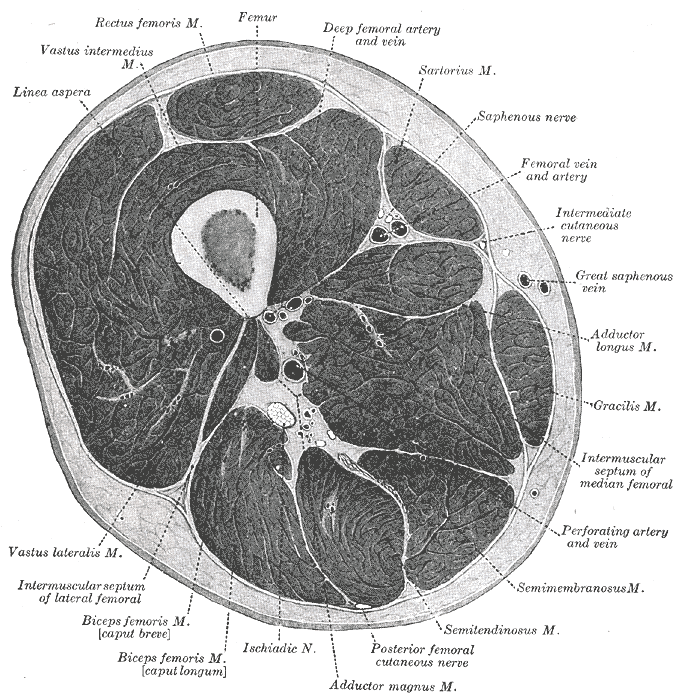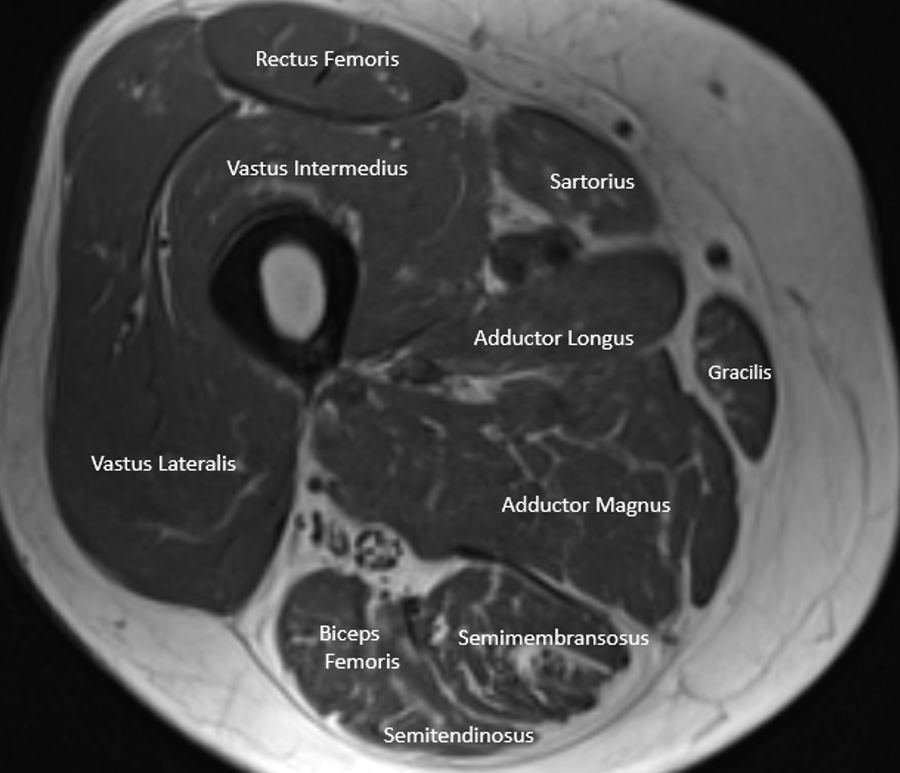[1]
Elattar O, Choi HR, Dills VD, Busconi B. Groin Injuries (Athletic Pubalgia) and Return to Play. Sports health. 2016 Jul:8(4):313-23. doi: 10.1177/1941738116653711. Epub 2016 Jun 14
[PubMed PMID: 27302153]
[2]
Burckett-St Laurant D, Peng P, Girón Arango L, Niazi AU, Chan VW, Agur A, Perlas A. The Nerves of the Adductor Canal and the Innervation of the Knee: An Anatomic Study. Regional anesthesia and pain medicine. 2016 May-Jun:41(3):321-7. doi: 10.1097/AAP.0000000000000389. Epub
[PubMed PMID: 27015545]
[3]
Zlotorowicz M, Czubak-Wrzosek M, Wrzosek P, Czubak J. The origin of the medial femoral circumflex artery, lateral femoral circumflex artery and obturator artery. Surgical and radiologic anatomy : SRA. 2018 May:40(5):515-520. doi: 10.1007/s00276-018-2012-6. Epub 2018 Apr 12
[PubMed PMID: 29651567]
[4]
Jo SY, Chang JC, Bae HG, Oh JS, Heo J, Hwang JC. A Morphometric Study of the Obturator Nerve around the Obturator Foramen. Journal of Korean Neurosurgical Society. 2016 May:59(3):282-6. doi: 10.3340/jkns.2016.59.3.282. Epub 2016 May 10
[PubMed PMID: 27226861]
[5]
Lee JH, Kim KJ, Jeong YG, Lee NS, Han SY, Lee CG, Kim KY, Han SH. Pes anserinus and anserine bursa: anatomical study. Anatomy & cell biology. 2014 Jun:47(2):127-31. doi: 10.5115/acb.2014.47.2.127. Epub 2014 Jun 20
[PubMed PMID: 24987549]
[6]
Pesquer L, Reboul G, Silvestre A, Poussange N, Meyer P, Dallaudière B. Imaging of adductor-related groin pain. Diagnostic and interventional imaging. 2015 Sep:96(9):861-9. doi: 10.1016/j.diii.2014.12.008. Epub 2015 Mar 29
[PubMed PMID: 25823982]
[7]
Zhong S, Wu B, Wang M, Wang X, Yan Q, Fan X, Hu Y, Han Y, Li Y. The anatomical and imaging study of pes anserinus and its clinical application. Medicine. 2018 Apr:97(15):e0352. doi: 10.1097/MD.0000000000010352. Epub
[PubMed PMID: 29642176]
[8]
Gupta V, Feng K, Cheruvu P, Boyer N, Yeghiazarians Y, Ports TA, Zimmet J, Shunk K, Boyle AJ. High femoral artery bifurcation predicts contralateral high bifurcation: implications for complex percutaneous cardiovascular procedures requiring large caliber and/or dual access. The Journal of invasive cardiology. 2014 Sep:26(9):409-12
[PubMed PMID: 25198481]
[9]
Bauer M, Wang L, Onibonoje OK, Parrett C, Sessler DI, Mounir-Soliman L, Zaky S, Krebs V, Buller LT, Donohue MC, Stevens-Lapsley JE, Ilfeld BM. Continuous femoral nerve blocks: decreasing local anesthetic concentration to minimize quadriceps femoris weakness. Anesthesiology. 2012 Mar:116(3):665-72. doi: 10.1097/ALN.0b013e3182475c35. Epub
[PubMed PMID: 22293719]
[10]
Seo SS, Kim OG, Seo JH, Kim DH, Kim YG, Park BY. Comparison of the Effect of Continuous Femoral Nerve Block and Adductor Canal Block after Primary Total Knee Arthroplasty. Clinics in orthopedic surgery. 2017 Sep:9(3):303-309. doi: 10.4055/cios.2017.9.3.303. Epub 2017 Aug 4
[PubMed PMID: 28861197]
[11]
Chiron P, Murgier J, Cavaignac E, Pailhé R, Reina N. Minimally invasive medial hip approach. Orthopaedics & traumatology, surgery & research : OTSR. 2014 Oct:100(6):687-9. doi: 10.1016/j.otsr.2014.06.009. Epub 2014 Aug 20
[PubMed PMID: 25164350]
[12]
Kang C, Hwang DS, Hwang JM, Park EJ. Usefulness of the Medial Portal during Hip Arthroscopy. Clinics in orthopedic surgery. 2015 Sep:7(3):392-5. doi: 10.4055/cios.2015.7.3.392. Epub 2015 Aug 13
[PubMed PMID: 26330964]
[13]
Wang XJ, Lu Li, Zhang ZH, Su YX, Guo XS, Wei XC, Wei L. Ilioinguinal approach versus Stoppa approach for open reduction and internal fixation in the treatment of displaced acetabular fractures: A systematic review and meta-analysis. Chinese journal of traumatology = Zhonghua chuang shang za zhi. 2017 Aug:20(4):229-234. doi: 10.1016/j.cjtee.2017.01.005. Epub 2017 Jun 19
[PubMed PMID: 28709737]
Level 1 (high-level) evidence



